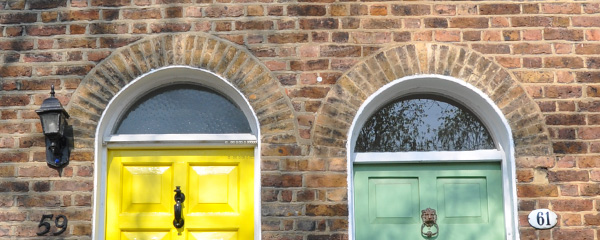
The Party Wall etc. Act 1996 and party wall procedure
The basics explained
The Party Wall etc. Act 1996 is a pragmatic, enabling and protecting piece of legislation that extends to England and Wales. The Act covers building upon or up to the line of junction separating properties, altering and building into jointly owned walls/structures and digging excavations and building foundations near existing structures and along boundaries.
- The Act enables building owners to get on with intended construction affecting shared structure and to alter and adapt existing buildings and not be stopped by a neighbouring owner unreasonably.
- The Act protects neighbouring owners who can gain a written party wall award before works are done outlining the proposed works and setting conditions as to how the works will be done.
If there is no party wall award before works are carried out, it could be difficult to ascertain the cause of damage and apportion costs etc. And so, it is important to make sure an award is in place before relevant works are undertaken. There is no provision for making retrospective party wall awards. As a result, it is essential to gain a party wall award before any works are carried out. If a building owner starts works relevant to the Act without gaining a party wall award, it is advisable to get that owner to suspend works and give notice to get a party wall award in place before proceeding.
In order to invoke the Party Wall etc. Act 1996, the owner doing the building (the Building Owner) must serve notice upon the neighbouring owner (the Adjoining Owner), who must be an owner with over a one year’s interest in his/her respective property. This includes all relevant leasehold and freehold owners, who are all entitled to a separate party wall award each. Once a notice is served by a Building Owner, the neighbouring Adjoining Owner may consent, thereby agreeing to the works, in which case, no party wall award is required. Or the Adjoining Owner may dissent to the works, thereby causing what is entitled as a dispute, meaning that surveyors need to be appointed and a party wall award is required to resolve the dispute.
Though the term ‘dispute’ sounds bad, it is nothing to worry about; it is simply a legal device that creates the reason an agreement must be drawn up. One party wall surveyor may represent both owners to make an award as a joint party wall surveyor. This is potentially fine and cheaper for the Building Owner, if the works are relatively straight forward. But it is more often the case that there will be debate about how best to proceed, often complicated with building costs and related matters. It is more common for both the Building Owner and the Adjoining Owner to appoint their own respective party wall surveyors who will argue the merits of doing it one way or another and upon the legal form of an award. A party wall award will cover: who the owners of the properties are, what relevant works are proposed with drawings and how the works must be done. There are also clauses that make sure damage is put right, that insurance is taken out, and other clauses deciding the particulars of construction and stipulate working times and the use of scaffolding and site security and all manner of possibilities related to the works that could become an issue. Another key element is the schedule of condition that records the state of the neighbouring property in detailed text with photos attached, that is used to ensure that, if damage is done, it can be assessed and remedied correctly.
Of course, there are other possible twists and turns, special cases and time limits etc. And while the Party Wall etc. Act 1996 sets two months as the period for an agreement to made from the date of a party structure notice being issued, in all practical working, it is common for a standard party wall award to take 10 weeks or more to be agreed from start to finish. So, it is important to set the party wall process in motion before getting contractors on site. It is also crucial that the Building Owner’s party wall surveyor be attuned to the building programme and have all the necessary detailed information to agree awards ahead of schedule whenever possible. If you are building, having all the information prepared and ready for construction is important in order to keep lengthy exchanges of correspondence to a minimum as this can hold up the process.
There can be added risk and complication, especially if building involves deep excavation or a basement construction. In these cases, particularly if there is difficult geology or complicated building sequences, it is becoming more usual to employ techniques that carefully record building movements live during the construction processes using building movement monitoring. Elden Croy Architect has experience in ensuring that this technique is used appropriately and not abused.

